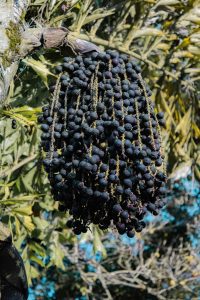
What Is a Lime?
A lime is a small, green citrus fruit with a bright and tangy flavor. Belonging to the citrus genus, it is scientifically known as Citrus aurantiifolia. Limes are widely cultivated and used in various culinary applications around the world. They are known for their refreshing taste and acidity, adding a zesty kick to both sweet and savory dishes.
Limes come in different varieties, with the two main types being the Persian lime (Citrus latifolia) and the Key lime (Citrus aurantiifolia). The fruit is typically round or oval in shape, and its skin can range from green to yellow. The pulp is juicy and divided into segments filled with tiny seeds.
Limes are a common ingredient in cooking, baking, and beverage preparation. Lime juice and zest are often used to enhance the flavor of salads, marinades, cocktails, desserts, and a variety of dishes. Additionally, limes are valued for their high vitamin C content and can provide a burst of citrusy freshness to many culinary creations.
Why Do We Eat Limes?
We eat limes for various reasons, primarily driven by their distinct flavor, versatility in culinary applications, and nutritional benefits. Here are some reasons why limes are consumed:
- Flavor Enhancement:
- Limes have a bright, tangy, and citrusy flavor that adds zest and freshness to a wide range of dishes. Whether used in savory or sweet recipes, lime juice or zest can enhance the overall taste and aroma.
- Cooking and Baking:
- Limes are a popular ingredient in cooking and baking. Lime juice is often used in marinades, dressings, sauces, and salsas, while lime zest can add a burst of flavor to various desserts, cakes, and cookies.
- Beverages:
- Lime juice is a common ingredient in beverages such as cocktails, mocktails, and refreshing drinks. Lime wedges are also commonly used as a garnish for beverages like water, soda, and cocktails.
- Preservation:
- Lime juice is known for its natural preservative properties. It is often used to prevent browning in cut fruits like apples and avocados due to its antioxidant content, mainly vitamin C.
- Culinary Versatility:
- Limes are versatile and complement a wide array of cuisines. They are a key ingredient in dishes from various cultural traditions, adding a unique and vibrant element to the culinary experience.
- Nutritional Benefits:
- Limes are a good source of vitamin C, an antioxidant that supports the immune system, promotes skin health, and aids in the absorption of iron. They also contain other vitamins, minerals, and beneficial compounds.
- Refreshing Qualities:
- The refreshing and citrusy nature of limes makes them a popular choice for adding brightness to both savory and sweet dishes. Their flavor profile can cut through richness and add balance to a variety of recipes.
- Health Benefits:
- Consuming limes can contribute to overall health due to their nutritional content. They are a hydrating fruit and can be part of a balanced diet.
In summary, limes are valued for their flavor-enhancing qualities, culinary versatility, and nutritional contributions. Whether used in cooking, baking, beverages, or as a garnish, limes are a widely appreciated fruit that adds a burst of freshness to many dishes.
When Do We Eat Limes?
Limes are consumed at various times and in numerous culinary contexts, both as a primary ingredient and as a flavorful garnish. Here are some common occasions and situations when people eat limes:
- Cooking and Meal Preparation:
- Limes are frequently used in cooking to add flavor to savory dishes, marinades, sauces, and dressings. They are often squeezed over grilled meats, seafood, salads, and other culinary creations.
- Beverages:
- Lime juice is a popular addition to a variety of beverages. Whether it’s in cocktails, mocktails, iced tea, or infused water, limes are commonly used to impart a refreshing and citrusy taste.
- Desserts:
- Limes, especially their zest and juice, are employed in baking and dessert-making. Lime-flavored desserts such as pies, tarts, cakes, and cookies showcase the fruit’s tangy and aromatic qualities.
- Snacking:
- Some people enjoy eating limes as a snack by themselves, especially when the fruit is ripe and flavorful. However, due to their tartness, this is less common compared to snacking on sweeter fruits.
- Garnish:
- Lime wedges or slices are often used as a garnish for a variety of dishes and beverages. They can add visual appeal and a burst of citrus flavor to the presentation.
- Culinary Pairing:
- Limes are integrated into a diverse range of cuisines, enhancing the flavors of dishes from Mexican, Thai, Indian, and Mediterranean cuisines, among others.
- Preserving Freshness:
- Lime juice is sometimes used to prevent browning in cut fruits like apples, avocados, and bananas due to its antioxidant properties.
- Hydration:
- Lime slices or wedges are commonly added to water, providing a refreshing twist and encouraging hydration.
The consumption of limes is not limited to specific times but is rather driven by personal preferences, culinary traditions, and the desired flavor profile in various dishes and beverages.
Ingredients of Limes
Limes, being a natural fruit, consist of various components that contribute to their flavor and nutritional profile. Here are the main elements found in limes:
- Water:
- Limes have a high water content, contributing to their juiciness and overall hydration.
- Natural Sugars: Limes contain natural sugars, including fructose, which provide their characteristic sweetness. However, limes are known for their tartness more than sweetness.
- Dietary Fiber:
- Limes are a good source of dietary fiber, which aids digestion and helps maintain a healthy digestive system.
- Vitamins:
- Limes are rich in vitamin C, an antioxidant that supports the immune system, promotes skin health, and aids in the absorption of iron. They also contain small amounts of vitamins like vitamin A, vitamin K, and some B vitamins.
- Minerals:
- Limes provide essential minerals, including potassium, which is important for heart health and muscle function.
- Citric Acid:
- Limes are characterized by their tartness, which comes from citric acid. This natural acid contributes to the distinctive flavor of limes.
- Flavonoids and Phytonutrients:
- Limes contain various flavonoids and phytonutrients that have antioxidant properties, contributing to overall health.
It’s important to note that the nutritional content of limes can vary slightly depending on factors such as the specific variety of lime and growing conditions. Consuming limes in their natural state allows you to benefit from these nutritious components without any additional ingredients. Lime zest, which contains essential oils and aromatic compounds, can also be used to enhance flavor in cooking and baking.
Types of Limes
There are several varieties of limes, each with its own unique characteristics and flavor profiles. The two main types of limes that are widely recognized are Persian limes (Tahiti limes) and Key limes. Here’s an overview of these common lime varieties:
Persian Limes (Tahiti Limes):
- Description:
- Persian limes are larger than Key limes and are typically oval or elliptical in shape. They have a glossy, bright green to yellow-green skin.
- Flavor:
- Persian limes have a less intense tartness compared to Key limes, with a milder and sweeter taste. They are commonly used in culinary applications and beverages.
Key Limes (Mexican or West Indian Limes):
- Description:
- Key limes are smaller and rounder than Persian limes, with a thin, smooth, and yellow-green skin. They are often about the size of a ping-pong ball.
- Flavor:
- Key limes are known for their intense tartness and a slightly bitter flavor. They have a distinctive and robust citrus taste.
- Common Use:
- Key limes are traditionally used in making Key lime pie and are popular for their flavor in cocktails and desserts.
In addition to these two main types, there are also other lime varieties grown in different regions, each with its own unique characteristics. Some of these include:
Kaffir Limes (Makrut Limes):
- Description:
- Kaffir limes are distinct for their wrinkled, bumpy skin. The leaves of the Kaffir lime tree are also used in cooking for their aromatic qualities.
- Flavor:
- The zest and leaves of Kaffir limes are often used in Southeast Asian cuisine for their unique citrusy and floral aroma.
Australian Finger Limes (Citrus australasica):
- Description:
- Also known as caviar limes, finger limes are small, elongated fruits with a caviar-like texture. They come in various colors, including green, pink, and red.
- Flavor:
- Finger limes have tiny juice vesicles that burst with a tangy and citrusy flavor. They are used as a gourmet ingredient and garnish.
These lime varieties may be preferred in different culinary applications based on their flavor profiles. The choice between Persian limes and Key limes, in particular, often depends on regional availability and personal taste preferences.
Signs of Ripe, Signs of Raw and Signs of Rotten Limes
Signs of Ripe Limes:
- Color:
- Ripe limes typically have a bright and vibrant color. Depending on the variety, this can range from bright green to yellow-green or yellow. The color should be consistent and uniform.
- Firmness:
- Ripe limes are firm but yield slightly to gentle pressure. They should not feel rock-hard, indicating that they have juiciness.
- Weight:
- Ripe limes feel heavier for their size, as they contain more juice. Pick limes that feel dense when held.
- Smooth Skin:
- The skin of ripe limes is smooth and free from blemishes or wrinkles. However, some variations in texture are normal.
- Aroma:
- Ripe limes may have a subtle, fresh citrus aroma. While the aroma might not be as strong as some other fruits, a hint of citrus can be detected.
Signs of Raw or Unripe Limes:
- Color:
- Unripe limes are often lighter in color, leaning towards a pale green. They may not have reached their full vibrant hue.
- Hardness:
- Unripe limes are hard to the touch and lack the slight give that indicates juiciness.
- Weight:
- Unripe limes may feel lighter for their size, indicating that they haven’t developed as much juice.
- Bitter Taste:
- Unripe limes can have a more bitter taste compared to their fully ripened counterparts.
Signs of Rotten Limes:
- Discoloration:
- Rotten limes may develop dark spots, brown patches, or an overall dull appearance. Discoloration is a clear sign of spoilage.
- Mold:
- Visible mold on the skin is a definite indication of decay. Inspect the limes for any fuzzy or discolored patches.
- Softness:
- Rotten limes will feel overly soft, mushy, or even slimy when touched. Pressing on them may result in a noticeable indentation.
- Foul Odor:
- Rotten limes emit a foul or unpleasant smell, indicating decay or fermentation.
- Leaking Liquid:
- Any liquid oozing from the lime is a sign of internal breakdown and spoilage.
When selecting limes, choose those that exhibit the signs of ripeness mentioned earlier. Avoid limes that are overly hard, excessively soft, discolored, or have a foul odor. Proper storage can also help extend the freshness of ripe limes.
Summary
Limes, belonging to the citrus family, are versatile fruits enjoyed for their distinctive flavor and numerous culinary applications. Two main varieties, Persian and Key limes, dominate the market, each offering unique characteristics. Ripe limes exhibit vibrant colors, firmness with slight yielding to pressure, and a smooth texture. They are valued for their role in enhancing the taste of savory dishes, desserts, and beverages, thanks to their tangy and refreshing juice.
Unripe limes, on the other hand, display paler hues, hardness, and a lack of juiciness. Their flavor tends to be more bitter compared to ripe limes. Recognizing signs of spoilage is crucial; rotten limes show discoloration, mold, softness, and emit a foul odor.
Beyond their culinary uses, limes contribute to a balanced diet, providing vitamin C, dietary fiber, and essential minerals. Whether squeezed over grilled dishes, incorporated into desserts, or used to garnish beverages, limes remain a popular choice for adding a burst of citrusy freshness to a wide array of culinary creations. Proper selection and storage ensure the best quality and flavor, making limes a valuable and versatile addition to kitchens worldwide.






